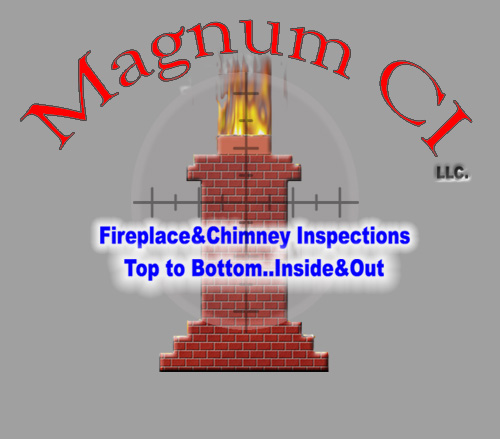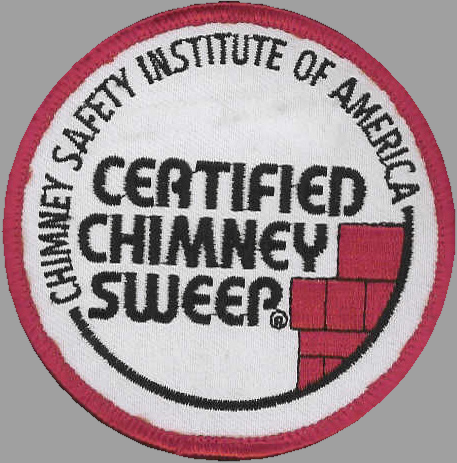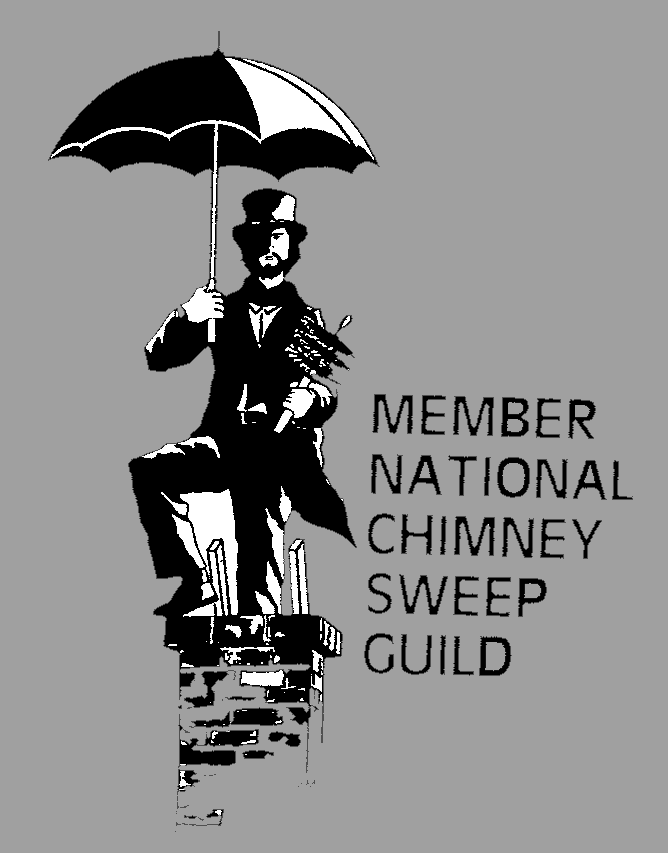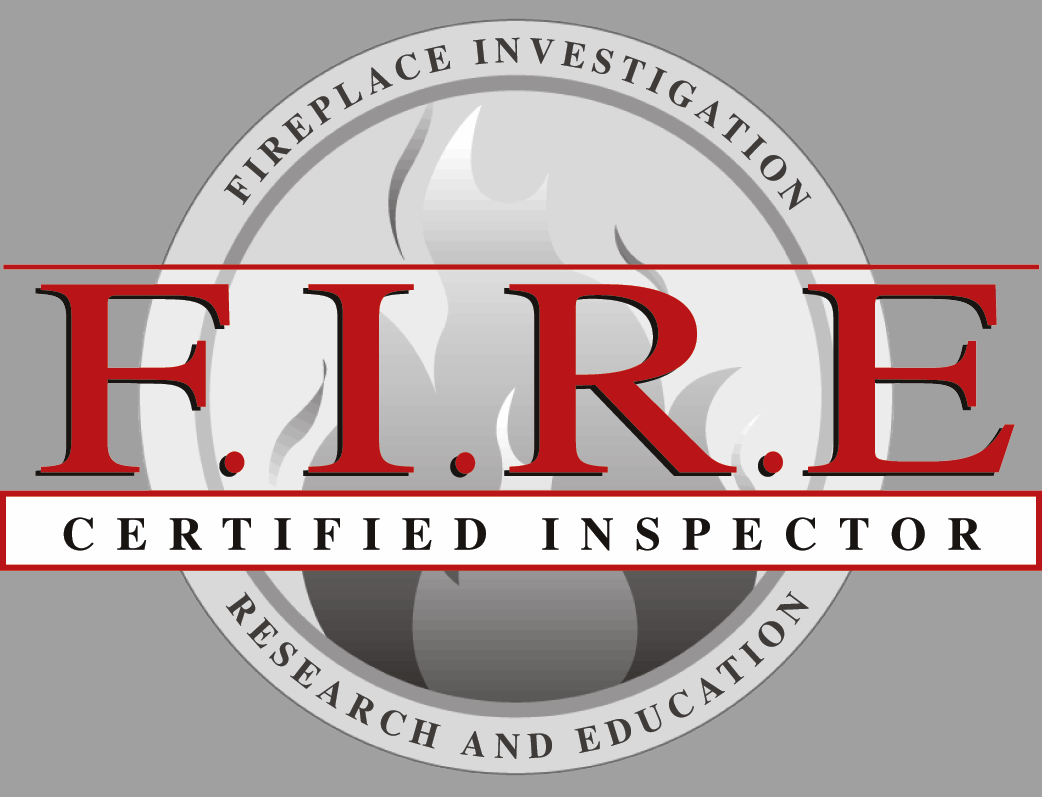Magnum Chimney Inspections, LLC |
||||
PO Box 247Clarksboro, NJ 08020866-330-9949magnumci@comcast.net |
||||
Q. How often should I have my chimney swept and inspected? This is a tougher question than it sounds. The quick simple answer is: The National Fire Protection Association standard 211 says, "Chimneys, fireplaces, and vents shall be inspected at least once a year for soundness, freedom from deposits, and correct clearances. Cleaning, maintenance, and repairs shall be done if necessary." This is the national safety standard and is the correct way to approach the problem. It takes into account the fact that even if you don't use your chimney much, animals may build nests in the flue or there may be other types of deterioration that could make the chimney unsafe to use. The need for inspection can also be affected by these factors:
Reasons for inspection and cleaning:
Q. My fireplace smokes. What can I do? There are a multitude of reasons for smokey fireplaces . We have linked to an entire section provided by CSIA on smoking fireplaces and we suggest you go there for a better discussion of this problem. Q. My fireplace stinks, especially in the summer. What can I do? The smell is due to creosote deposits in the chimney, a natural byproduct of wood burning. The odor is usually worse in the summer when the humidity is high and the air conditioner is turned on. A good sweeping will help but usually won't solve the problem completely. There are commercial chimney deodorants that work pretty well, and many people have good results with baking soda set in the fireplace. The real problem is the air being drawn down the chimney, a symptom of overall pressure problems in the house. Some make-up air should be introduced somewhere else in the house. A tight sealing, top mounted damper will also reduce this air flow coming down the chimney. Q. When I build a fire in my upstairs fireplace, I get smoke from the basement fireplace. This has become quite a common problem in modern air tight houses where weather proofing has sealed up the usual air infiltration routes. The fireplace in use exhausts household air until a negative pressure situation exists. If the house is fairly tight, the simplest route for makeup air to enter the structure is often the unused fireplace chimney. As air is drawn down this unused flue, it picks up smoke that is exiting nearby from the fireplace in use and delivers the smoke to the living area. The best solution is to provide makeup air to the house so the negative pressure problem no longer exists, thus eliminating not only the smoke problem, but also the potential for carbon monoxide to be drawn back down the furnace chimney. A secondary solution is to install a top mount damper on the fireplace that is used the least. Q. I heat with gas. Should this chimney be checked too? Without a doubt! Although gas is generally a clean burning fuel, the chimney can become non-functional from bird nests or other debris blocking the flue. Modern furnaces can also cause many problems with the average flues intended to vent the older generation of furnaces. We suggest you check at CSIA in the areas on gas and carbon monoxide for more information. Q. Who do I Call For A Qualified Inspection? There are three professional Certifications within the fireplace and chimney industry. Sometimes these categories may overlap but in most cases there is a main focus and direction for each Certification. Sweeping (C.S.I.A. Certified Chimney Sweep) A “Certified Chimney Sweep” is tested and certified through the CSIA, (Chimney Safety Institute of America) and is focused on the service (sweeping), and repair of solid fuel burning appliances, chimneys and venting systems. The primary job of the C.S.I.A. Certified Chimney Sweep is to aid in the prevention of fires related to fireplaces, wood stoves, gas, oil and coal heating systems and the chimneys that they serve. While some sweeps are licensed and certified to perform other aspects within the hearth industry, the C.S.I.A. was born out of the National Chimney Sweep Guild. For more information contact C.S.I.A. at www.csia.org. New System Sales, Installation and Service (N.F.I. â Solid-Fuel, Gas & Pellet Certified Specialist) A “Certified Specialist” is certified through the N.F.I. â, (National Fireplace Institute) and is focused on the planning and proper installation of residential hearth appliances and their venting systems. N.F.I. â is the professional certification division of the HEARTH Education Foundation and provides tested education on the installation of gas-burning fireplaces, inserts, gas logs, wood-burning fireplaces and pellet stoves. The majority of their focus is on the familiarization of hearth products and increased awareness of their function and operation. NFI's objective is to increase public safety while serving the public interest. This service includes meaningful credentials for professionals and the delivery of necessary education to ensure the proper installation and operation of their products. While they do cover masonry systems, their main focus is on factory-built appliances. The N.F.I. â is the successor of the WHERF & HEARTH exam programs and was born out of the Hearth, Patio & Barbeque Association, which is the leading trade association in the Hearth Industry. For more information contact N.F.I. â at www.nficertified.org.
Inspection of All Fireplaces, Chimneys, and Venting Systems (F.I.R.E. Certified Inspector) A “F.I.R.E. Certified Fireplace and Chimney Inspector” is certified through the F.I.R.E. Service (Fireplace Investigation, Research & Education Service) and is focused on the detailed inspection of all fireplaces, inserts, gas-burning appliances, chimneys, vent systems, stoves and other associated components. This training is based on the applicable building codes, manufacturer’s requirements, historical performance and the performance of individual products and materials. The F.I.R.E. Certification Program was born out the increasing necessity and demand for qualified inspectors. This program is fueled by information derived from the ongoing efforts of the fire investigation, home inspection and fireplace industries. F.I.R.E. Service supplies the required education and training to provide detailed and accurate inspections. This certification also assists the Home Inspectors, Fire Investigators, Contractors, Architects, Insurance Carriers and others by providing a qualified tool for their professional needs. For more information contact F.I.R.E. Service at www.F-I-R-E-Service.com.
Q. Which Tool Do I Use? Inspectors, contractors and sweeps are tools for your trade. The decision of which tools to use is based on the needs of the property not the real estate agent. One of the newer developments within the home inspection industry is the recommendation for referral to specialty inspections. In fact, one of the national associations clearly indicates that you shall refer your client in the proper direction. This approach will assist in the reduction of negligent referral claims. The home inspection industry has been gradually moving in this direction for the past fifteen years. When you refer a fireplace and chimney specialist, there are a few things you should consider. Is there the possibility of undetected conditions? Does it need further investigation by an inspector? Does it just need a good sweeping? Make the right call for the necessary service.
Q. How Do I Qualify These Tools? Although some individuals may have purchased the proper equipment to perform an inspection, without the proper training and knowledge, the conditions or findings may be misinterpreted and in some cases may be used to promote fraud. It is imperative that any individual you refer has the appropriate education and certification for the service they provide. Failure to research these individuals may result in damage to your business. Do not miss the opportunity to question the fireplace and chimney professional on their continuing education achievements. If the owner and their staff are not attending or participating in continued education, then they are not fulfilling their fiduciary responsibility to their clients. Are those in the field performing this service the ones attending these classes? Education and ethics is the key to a successful and honest service. However, no degree, certification, license or other credential will guarantee someone’s performance, credibility or integrity. It is always up to the consumer to qualify one’s true abilities and performance.
Q. What Is The NFPA? The National Fire Protection Association is a non-profit origination developed to reduce fire loss and injury through means of education, guidelines and standards. The NFPA has written the 211 Standard for Chimneys, Fireplaces, Vents, and Solid Fuel-Burning Appliances. This standard addresses proper construction and installation of these systems including commercial and industrial applications. The NFPA was concerned with the condition of existing chimneys and added a chapter to the NFPA 211 Standards regarding the inspection of these chimneys. These are the only standards of their kind within the fireplace and chimney industry. For more information contact NFPA at www.nfpa.org.
Q. What Are The Standards!? The NFPA 211 Standard for “Inspection of Existing Chimneys” was developed and first printed in the 2000. This is the first time that an inspection standard was written and presented to the fireplace and chimney industry. These standards have been embraced by those on the professional level while being cursed by those whom continue to provide their service as before. It is important to understand that writing an inspection to generate work is quite different than performing a detailed unbiased inspection. These NFPA standards assist in the direction of an inspection and are not concerned with proposals and/or repairs. Unfortunately, these standards do not explain how to perform these inspections but simply “When” they shall take place and “What” areas are to be accessed.
Q. I Don’t Understand The Standards!? The first thing you need to understand is that the NFPA 211 standards are intended for the Fireplace, Chimney and Venting industry Only. These standards do not applied to you as home inspectors. However, everyone with the Fireplace & Chimney industry may be held accountable to chapter eleven within the 2000 edition & chapter fourteen within the 2003 edition of the NFPA 211 Standards. This professional responsibility exists whether the NFPA 211 was officially adopted within the local jurisdiction or not. For further clarification, chapter eleven, “Inspection of Existing Chimneys”, within the NFPA 211 standards, was first published in 2000. It was later moved to chapter fourteen in the 2003 edition. The inspection standards found within these chapters are recognized by the Fireplace, Chimney & Venting Industry as “The Industry Standards”. What this means is those in the fireplace, chimney and venting industry may be held accountable for their actions in a court of law, based directly on these standards. If the NFPA 211 has been adopted by your local jurisdiction, then the entire standard (all chapters) will be in affect for all contractors and inspectors working on these products, within that jurisdiction. If it has not been adopted, then currently, only chapter fourteen applies as “The Industry Standard”. However, please note that many of the recognized and adopted building codes, industry references and manufacturer’s specifications refer back to the NFPA 211 standard. Therefore, whether or not the NFPA 211 has been adopted within your area, there are a number of ways to arrive back at the 211 standards.
The inspection of the fireplaces and chimneys during the resale of property has been a very confusing issue. Some who might benefit would like you to believe that a fireplace and chimney inspection is required on “ALL” resale transactions. However the truth is simple…”IF” a fireplace and chimney inspection takes place, then it shall follow the NFPA 211 standards. There is no Federal or State Department enforcing fireplace & chimney inspections on any transaction of property. The choice still remains in the Consumers hands. However, these standards are written based on past disasters and injury. Please note that a change in burning habits can result in a fire loss or personal injury if the system does not meet or exceed the code and manufacturer’s requirements. This means that a change in operation or use, such as a property resale, is a time of higher risk. Also note that some manufacturers recommend more frequent inspections such as 2-3 times during the burning season by the Homeowner. This recommendation refers to a simple visual inspection for obvious damage, flue blockage or creosote development to assess the need for further inspection, sweep or professional services. This should not be confused with the Levels of inspection described within this article, which are written for professional inspection services and not homeowners.
Q. What Does NFPA 211 Say? Lets review some of the text found within Chapter fourteen of the 2003 NFPA 211. There are three levels of inspection, Level I, Level II & Level III. Please note that t he scope of the inspection, the areas of the chimney examined, and the degree of invasiveness of the inspection shall be appropriate for the conditions giving rise to the inspection. Another important note is that nothing shall prevent the examination of all or part of the fireplaces & chimney at a higher level than the minimum required by the standard.
A Level I inspection shall be conducted:
The Scope and Access Required: Level I inspections shall include examination of readily accessible portions of the fireplaces & chimney and accessible portions of the connected appliance and chimney connection.
A Level II inspection shall be conducted:
The Scope and Access Required: Level II inspections shall include all accessible portions of the fireplace and chimney exterior and interior, including accessible attics, crawl spaces, and basements. These inspections shall include all accessible portions of the appliance and chimney connection, all areas covered in a Level I inspection, all areas of the fireplaces & chimney and its surroundings that can be accessed without the removal or destruction of permanently attached portions of the fireplace, chimney or building structure, all chimney flues and the internal surfaces of all flue liners incorporated within the chimney, and verification of proper clearances, proper use of material, flue sizing and much more. Video scanning equipment or other means shall be used as necessary to observe these areas.
A Level III inspection shall be conducted:
The Level III inspection should be performed at concealed locations where there is suspect of malfunction, damage or a hazardous condition. This access will be by removal or destruction of permanently attached portions of the fireplace, chimney or building structure, as necessary to determine compliance with this standard.
The Scope and Access Required: A Level III inspection shall include examination of concealed areas of the fireplace & chimney suspected of damage or malfunction as well as the examination of all areas required within a level I and Level II inspection.
ConclusionIn conclusion, home inspectors are not required to meet the NFPA 211 inspection standards. These standards apply to the fireplace and chimney industry only. If an inspection takes place by someone within the fireplace and chimney industry, the professional must meet the minimum requirements as set forth by the NFPA 211 standards for inspection. Failure to meet or exceed these standards may result in damage. As an experienced inspector and fireplace consultant, I choose to perform Level II and Level III inspections. It is my opinion that due to the limited access, a Level I inspection may not be sufficient to determine the serviceability and safety of a fireplace or chimney system. However, as the standards read, only a Level I inspection is required when a chimney sweep is called in to service the chimney. This is due to the service requested and not necessarily the qualifications of the sweep. A Level II inspection is required “Upon sale or transfer of property” or one or more of the conditions listed within the NFPA 211 as stated above.
|
||||













